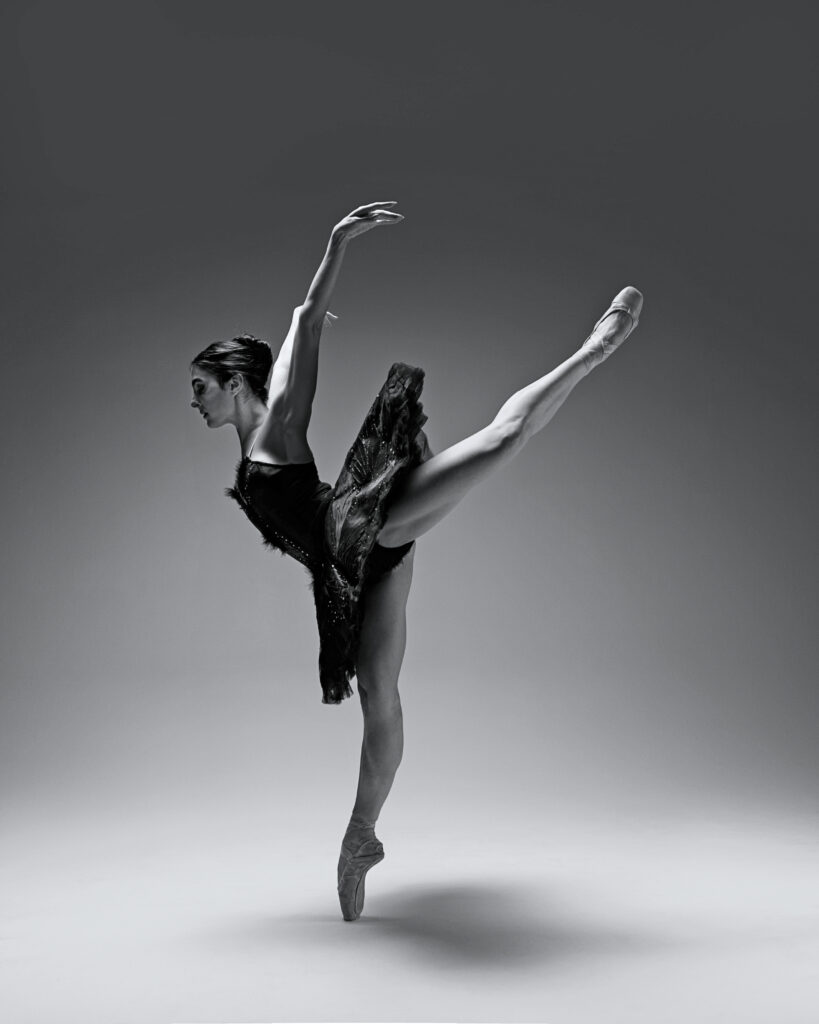Ballet Is Illegal in Iran. Tara Ghassemieh Is Fighting Back Through Her Dancing
There are countless videos of ballerinas performing 32 fouettés, but what about 50? Tara Ghassemieh, a principal dancer with Golden State Ballet, recently posted this feat to her Instagram, tagged #danceforIran, marking 50 days of protest in Iran.
Tara, who is of Persian descent, is campaigning to raise awareness of widespread protests against Iran’s government following the death of Mahsa Amini, who died in police custody last September after she was arrested for “improperly” wearing a headscarf.
Dance is a particularly relevant form of resistance.
“People don’t realize that all forms of Western dance are banned in Iran, including ballet,” says Ghassemieh. “There’s no artistic freedom. Can you imagine risking your life to dance?”
Ghassemieh is Iranian American, born in the U.S. to an American mother, with her father born in Iran and emigrating shortly before the 1978 Iranian revolution. She trained locally in Orange County, California, before moving to New York City to attend American Ballet Theatre’s Jacqueline Kennedy Onassis School at age 16. At JKO, a preexisting back injury worsened, cutting her training short and leading her to take four years off ballet.
At 20, she went back into the studio with young dancers in Orange County with Festival Ballet Theatre, a student-based company that brought in principal guest artists. She retrained, hoping to one day live her dream of dancing with ABT or a similar company. Within months, Festival Ballet hired her to dance lead roles, often alongside principal dancers from ABT, such as Lilac Fairy to Gillian Murphy’s Aurora in The Sleeping Beauty. In 2021, she joined Golden State Ballet, as did her husband, former San Francisco Ballet principal dancer Vitor Luiz, with whom she is raising three children.

As her dancing blossomed, she became keenly aware that she couldn’t share her artistry with her family in Iran. Her father didn’t even want her to visit there, fearing her dancing posed a threat to her safety. She was only able to meet her Persian family once, in Dubai.
“That visit was a turning point for me,” Ghassemieh says. She wanted to find a way to connect her Persian roots to ballet. Working with journalists and researchers, she found that there was a world-class dance company in Iran before the revolution, the Iranian National Ballet. “That entire history wasn’t being kept alive, and I felt I had a calling to do something about that.”
She also looked for another Persian professional ballet dancer in the U.S., but couldn’t find one.
“I said, ‘I’m the first Iranian principal dancer in the U.S.?’ I was proud, but also a little sad. I don’t want to be the only one,” she says. “I want to use that visibility to make change.”
With this realization, her dream changed—from dancing at the Metropolitan Opera House in New York City to performing at Tehran’s Roudaki Hall (changed to Vahdat Hall after the revolution) and representing Iran in the Western ballet world.
She embarked on several new projects. Her upcoming short film, Persian Swan, tells her story as the lone Iranian American ballerina and the glory and subsequent demise of the Iranian National Ballet—and the now 44-year exile of its dancers. She’s directing and co-choreographing with Luiz an evening-length work, The White Feather, which tells the history of Iran. The piece is a project of Ghassemieh and Luiz’s production company, Intuitv Artship, and will premiere in March at the Irvine Barclay Theater.

Working on Persian Swan brought another exciting collaborator into her world. Ghassemieh found Elle Toussi, an Iranian American producer and journalist, through a friend to help her edit the short film. It led to a documentary currently in progress about the Iranian National Ballet.
“I had no exposure to dance before meeting Tara, but I’m so grateful to her for bringing this to me,” says Toussi. “This is part of our history that the regime is systematically trying to erase, and we are working to document it and keep our heritage alive.”
Toussi was moved not only by Ghassemieh’s commitment to change in Iran, but by her dancing.
“When I saw her perform live, I was floored. It’s like she’s exactly where she’s supposed to be,” Toussi says.
Ghassemieh’s peers at Golden State Ballet have been very supportive of her efforts, though she wishes more in the dance community would speak up on social media, such as by using #danceforIran in their posts. But she understands that protesting the Iranian regime can be scary. Ghassemieh sometimes receives hateful, even threatening messages on social media. But she is not deterred.
“Growing up post-9/11 as a brown girl with a unibrow, kids called me ‘Terrorist Tara,’” she says. “I’m used to standing up for myself and for what I believe in. I will not stop until people are free to dance in Iran—and I believe we will win.”






